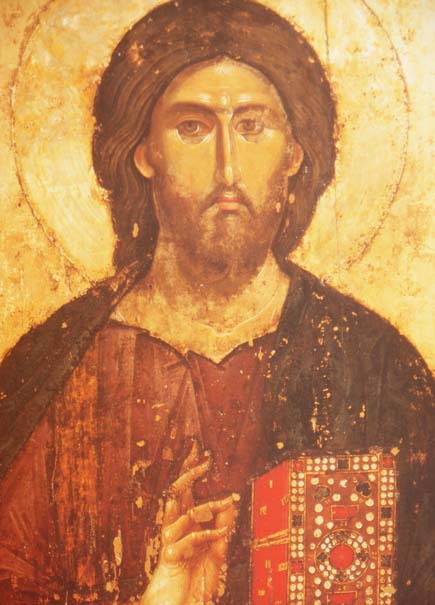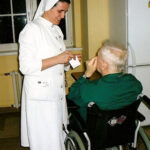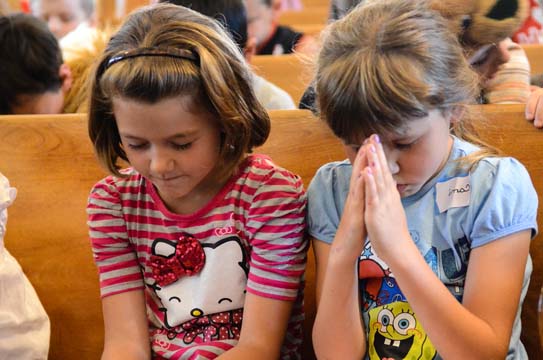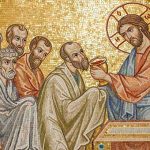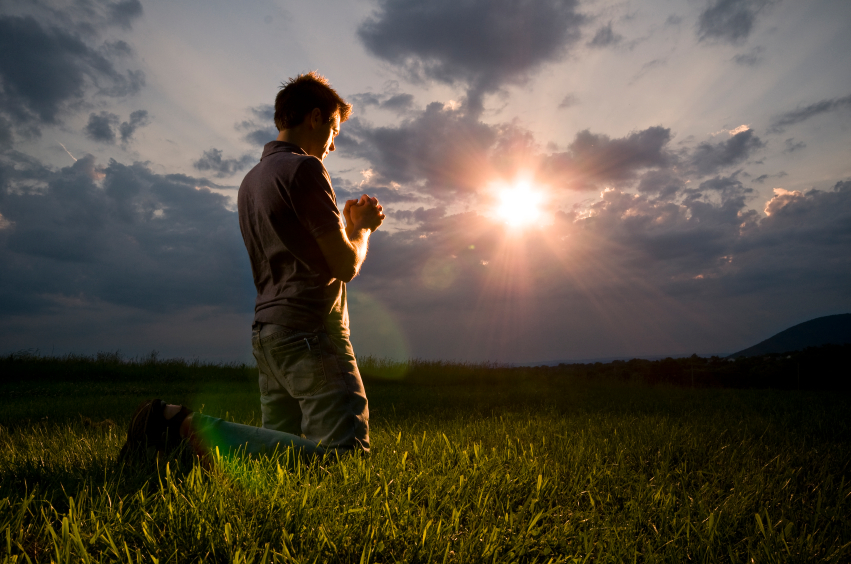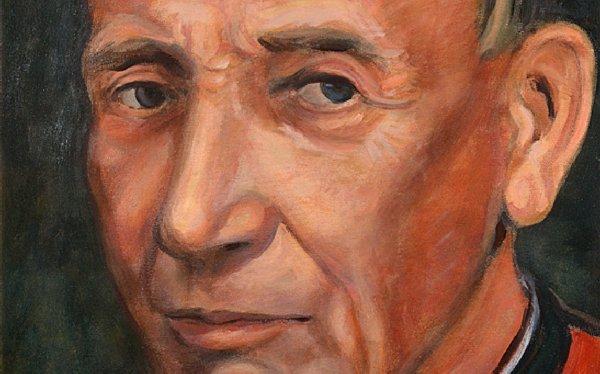 Cardinal Augustine Bea – Towards unity
Cardinal Augustine Bea – Towards unity
You probably heard, and perhaps you have even had personal contact with such people, who wander homes and engage others in religious conversation. They bring the scriptures with them., they speak of Jesus Christ. They reason similarly in many ways, how do you hear it on religion. But they say such things as well, which a Catholic cannot accept.
Maybe you've ever been to an Orthodox Church (e.g.. during the trip). It is a temple with a cross, the altar, yet it is organized differently than our churches. And the mass is celebrated differently there : priests put on different clothes and perform different ceremonies, and the faithful participate in it differently.
What to judge about it ? - Do you remember, Christ once founded one Church. He taught people about his Father. Then he sent a group of his apostles all over the world.
Followers of Christ - Christians for many years formed one big family. But over time, differences arose between them, small at first, then more and more. Mutual dislike also grew. There were many reasons for this. It has come to this, that the original unity of Christians has shattered. First, in the 11th century, the Christians in the East - today called the Orthodox - separated. It's you, who worship Christ in the churches.
Then in the 16th century, under the influence of Martin Luther's teachings, there was a split between Catholics in the West and several Christian communities, generally known as Protestants, were created. It's them today, broken down even more into small groups, they often go on missionary journeys, preaching their teaching about Christ around their homes and encouraging their adoption.
These rifts have caused much anxiety, and even hatred and struggles between nations. Religious differences were joined by other disagreements and political conflicts. An example of this is the religious war in Germany, which lasted until 30 years (1518-1548).
This is a sad page in the history of Christianity. After all, we are all united by the same Christ and His teaching, the same baptism, and they share differences that arose much later. That is why Christ looks at his followers with heartache, so divided among themselves. He was so eager for unity. The day before his death, he prayed in the Upper Room : “That they would all be one, like you, Father in me, and I am in you, that they too may be one in us…”
Therefore, what wiser Christians from different Christian communities, not only Catholics, they had thought about it more than once over the centuries, how to remedy this evil, how to bring about unity. These aspirations are today called the "ecumenical movement". In several cases, it led to mutual agreements and unions, but unfortunately, they did not cover all of Christianity and were not permanent. In the twentieth century, the ecumenical movement grew very much more active. More and more Christians understand, that this cannot go on and they are looking for a way, to unite everyone around Christ. Here are e.g.. w 1908 The Anglican clergyman James Francis Watton, understanding the need to pray for this intention, began the action, which continues today. This is called. "Week of Prayer for the Unity of Christians". Every year from 18-25 On January, Christians of all denominations gather in their churches, and recently even together, and they pray for the unity so desired by Christ.
In the Catholic ecumenical movement in recent years, Fr.. Cardinal Augustine Bea. He was from the country, which has suffered most from past religious wars, namely from Germany. Somehow, the words of Jesus' prayer in the Upper Room fell into his heart in a strange way and he devoted his whole life to it, to draw closer to the separated brethren. He maintained many personal contacts with various representatives of other Christian communities, is it Protestant, or Orthodox. He went to meetings, he wrote, gave lectures, etc.. For many years he did it privately, out of the need of your own heart.
When John XXIII became pope, pcs. kard. Bea received an order from him, to organize a special ecumenical institution for ecumenical matters, the so-called. Secretariat for Christian Unity. I ks. Cardinal Bea, though he was an old man, because he counted 79 years, he set to work vigorously, which corresponded so much to his heart's desire. He invited many specialists from different countries to cooperate. As the Second Vatican Council was approaching, pcs. Cardinal Bea with his Secretariat watched over it, that the conciliar documents contain nothing like this, what might be misunderstood by the separated brethren. He also contributed greatly to this, that representatives of other Christian Churches were also invited to the Council. Protestant clergy came, Orthodox, anglikańscy, they watched the deliberations and listened to them. They met with a very warm welcome, with kindness and trust. They were carefully cared for. Thanks to this, many of them learned to look at the Catholic Church differently and later contributed to reducing mutual aversion and distrust in their communities..
The Council Fathers adopted as many as three documents concerning the issues of Christian unity : Decree on Ecumenism and Two Declarations - on Religious Freedom and on the Church's Relation to Non-Christian Religions. Ks. Cardinal Bea had his hands full then. Together with his colleagues, he wanted to prepare these documents in this way, to be helpful in further efforts to unite Christians.
After the Council, Cardinal Bea continued to develop his ecumenical activity. Though he was getting weaker and weaker, he continued to travel, write and speak. He was everywhere there, where he saw some possibilities of mutual contacts. He has prepared a meeting, that the Father of St.. Paul VI during his trip to the Land of St.. with Patriarch Athena Goras, head of the Eastern Church in Constantinople. He also prepared visits by leading representatives of Christian communities, when one of them wanted to visit the Pope.
Cardinal Bea's long and rich life has left a deep and indelible mark on our Church. To, that today Christians of different faiths look at each other with greater kindness, that we all understand more and more the painful meaning of this split in the original Christian community, to a large extent we owe Fr.. Cardinal Augustine Bea.
Thus, the Catholic Church experienced his death very painfully in 1968 year. At this 87-year-old husband's coffin, old body, but forever young in spirit, not only Catholic clergy gathered, but also representatives of all Christian communities, believing deeply, that his efforts were not in vain. Contrary, have become a major step forward, bringing the Church of Christ closer to the much-desired unity.

